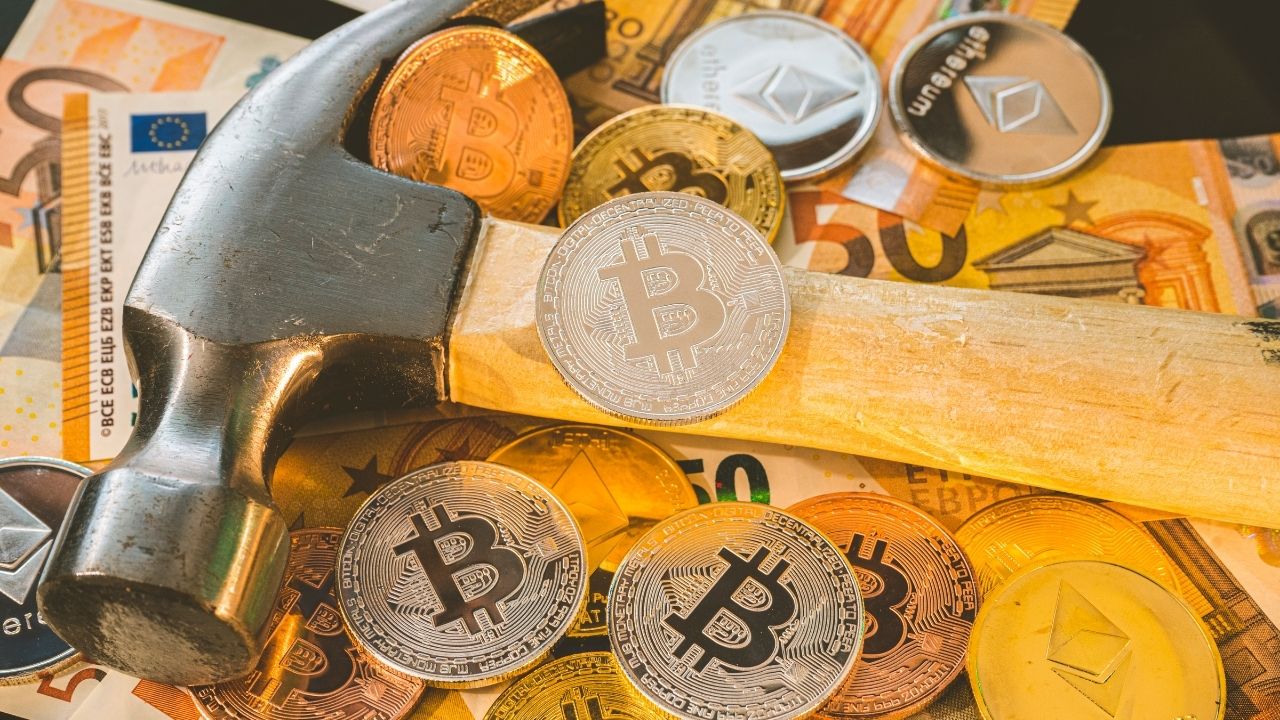Introduction
In the realm of cryptocurrencies, the allure of mining Bitcoin has sparked curiosity and questions. One prominent inquiry that often arises is: How long does it take to mine 1 BTC? This article embarks on a journey to unravel the intricacies of Bitcoin mining duration, delving into the factors that influence mining time, the evolving technology, and the implications for miners and the cryptocurrency ecosystem.
As the world of cryptocurrencies continues to expand, the process of mining Bitcoin has captivated the imagination of enthusiasts and investors alike. Among the inquiries that often arise, the question “How long does it take to mine 1 BTC?” stands as a beacon of curiosity. This article embarks on a journey to explore the intricacies of Bitcoin mining duration, shedding light on the factors that dictate mining time, the technological evolution, and the implications for the broader cryptocurrency landscape.
At the heart of understanding the duration of mining 1 BTC is a grasp of the mining process itself. Bitcoin mining involves solving intricate mathematical puzzles through robust computational systems. Miners engage in a competitive race to solve these puzzles, with the victor being rewarded with the coveted block reward, currently set at 6.25 BTC.
Beyond the basic process lies a dynamic component known as mining difficulty. Bitcoin’s protocol adjusts the mining difficulty approximately every two weeks, maintaining the network’s stability by aiming for a new block to be added to the blockchain approximately every 10 minutes. This regulation mechanism holds the key to comprehending the timeline for mining 1 BTC.
As the cornerstone of the cryptocurrency world, Bitcoin mining is a process that extends beyond its technical components—it’s a pursuit that embodies innovation, competition, and mathematical ingenuity. The curiosity surrounding the time it takes to mine a single Bitcoin reflects a desire to grasp the inner workings of this intricate system. From the early days when mining could be done with a regular computer to the present, where specialized hardware farms dominate the scene, the concept of mining duration has evolved alongside the technology itself.
Table of Contents
Understanding Bitcoin Mining Duration
The Mining Process
Before diving into the timeline, it’s crucial to understand the mining process. Bitcoin mining involves solving complex mathematical puzzles through powerful computer systems. Miners compete to solve these puzzles, with the first successful miner earning the coveted block reward, currently set at 6.25 BTC.
Mining Difficulty
Bitcoin’s protocol dynamically adjusts the mining difficulty approximately every two weeks to ensure that a new block is added to the blockchain roughly every 10 minutes. This dynamic adjustment is a key mechanism that influences the time it takes to mine 1 BTC.
Factors Influencing Mining Time
Hash Rate
The hash rate, or the computational power of the network, plays a crucial role in mining time. A higher hash rate among miners means increased competition, potentially leading to a shorter time to mine 1 BTC.
Mining Hardware
The type of mining hardware used also impacts mining duration. High-performance hardware can solve complex puzzles more quickly, potentially reducing the time it takes to mine a single Bitcoin.
Hash Rate’s Influence
The hash rate, often referred to as the computational prowess of the network, emerges as a pivotal factor in determining mining time. A higher collective hash rate signifies increased competition among miners, potentially leading to a reduction in the time required to mine a single BTC.
The Role of Mining Hardware
The choice of mining hardware plays a significant role in the duration of mining. More powerful and efficient hardware accelerates the solving of intricate puzzles, potentially shortening the time required to mine 1 BTC.
Evolving Landscape
Technological Advancements
As technology evolves, miners have access to more powerful and efficient hardware. This evolution can potentially lead to a decrease in mining time as more advanced equipment becomes available.

Implications and Considerations
Return on Investment
For miners, understanding the time it takes to mine 1 BTC is essential for calculating the potential return on investment. As mining becomes more competitive, miners need to weigh the costs of hardware, electricity, and time against potential rewards.
Network Health
The mining duration also impacts the overall health of the Bitcoin network. A stable and well-functioning network relies on consistent block production, which affects transaction processing and confirmation times.
Calculating Return on Investment
For miners, understanding the time frame required to mine 1 BTC is crucial for estimating potential returns on investment. In a competitive environment, miners must balance the costs of hardware, electricity, and time against potential rewards.
Network Dynamics
The duration of mining operations also influences the overall health of the Bitcoin network. Consistent block production, tied to mining duration, impacts transaction processing and the speed of confirmations.
The Ever-Changing Landscape
Technological Advancements
The landscape of Bitcoin mining continually evolves with technological advancements. As miners gain access to more sophisticated hardware, the potential arises for a decrease in mining time, aligning with the pace of innovation.
Conclusion
The question “How long does it take to mine 1 BTC?” is not a simple one, as the mining duration is influenced by a multitude of factors. From bitcoin mining difficulty and hash rate to evolving technology and hardware, the journey to mine a single Bitcoin involves a delicate interplay of dynamics that shape the cryptocurrency landscape.
The query “How long does it take to mine 1 BTC?” opens the door to an intricate world of variables and dynamics. From mining difficulty and hash rates to technological progress and hardware choices, the pursuit of mining a single Bitcoin is a multi-faceted endeavor.
Our journey has unveiled the significant role that factors like hash rate, mining hardware, and network difficulty play in determining the mining duration for 1 BTC. Beyond the quest for financial gain, mining embodies the ethos of decentralization, empowering individuals to participate in securing and validating transactions in the Bitcoin network.
As we reflect on the question, we find that the journey to mine 1 BTC is not solely about numbers—it’s about embracing the spirit of innovation and understanding the intricate dance between technology and time. The answer is a fusion of mathematics, computing power, and the collaborative efforts of a global community.
In conclusion, the timeline to mine 1 BTC encapsulates the essence of the cryptocurrency revolution—transcending mere digits and embracing a dynamic narrative of technological advancement. As the cryptocurrency landscape continues to evolve, so will the answer to this captivating question, reflecting the ongoing saga of innovation, decentralization, and the remarkable journey of cryptocurrency enthusiasts worldwide.





 Bitcoin
Bitcoin  Ethereum
Ethereum  XRP
XRP  Tether
Tether  USDC
USDC  Lido Staked Ether
Lido Staked Ether